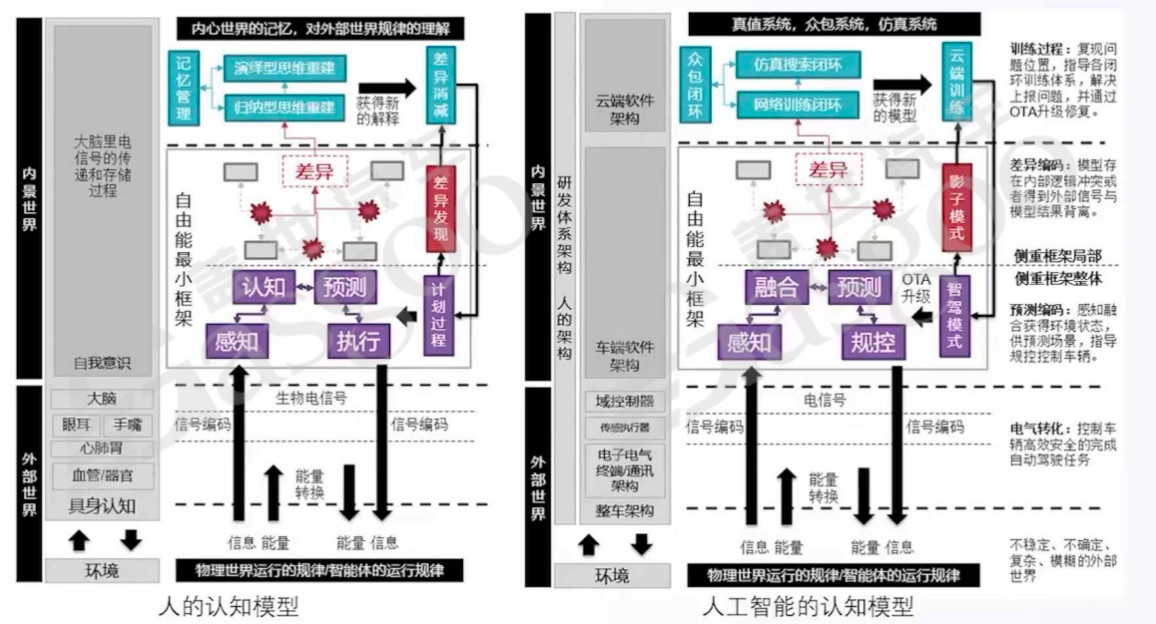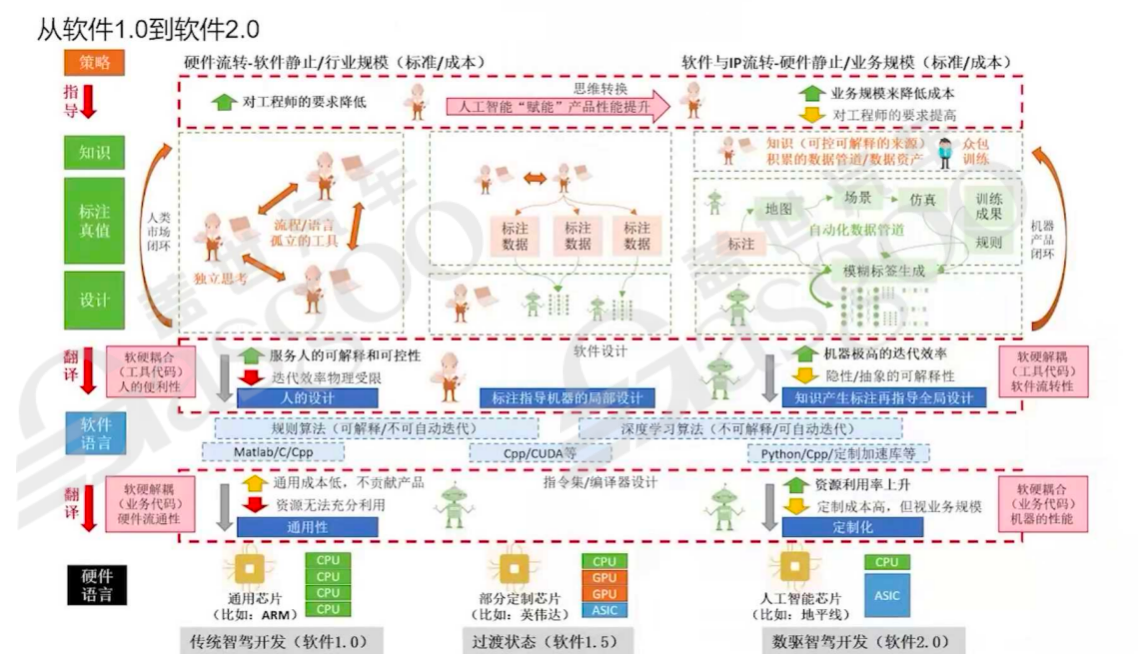In today's rapidly evolving automotive industry, various concepts like car-cloud integration, SOV, agile development, and controllers are emerging, leading to a plethora of terms in public discourse. However, from an educational perspective, I do not advocate for these flashy terms. Instead, after an influx of new concepts, it is crucial to filter out background noise and grasp the core essence. Currently, numerous concepts are challenging our cognition, and we must clarify the interconnections between knowledge. Only by doing so can we attain a clearer understanding when faced with new terms, concepts, and their relationships. Given the limitations of human memory capacity, it is important to focus on essential content. Firstly, engineers need to master technical thinking, represented by the blue part in the diagram. Every industry has its professional direction, and the knowledge acquired during university or early career stages typically falls within this realm. For instance, automotive engineering and computer software are foundational subjects taught at universities. Generally, engineers with 1-3 years of experience who can delve deeply into a specific technical field and achieve results can meet job requirements. However, after 2-3 years, this horizontal technical knowledge may no longer suffice to meet demands. Such technical knowledge is most commonly found online and in school education. Yet, two years later, especially in the field of intelligent vehicles or other intelligent products, engineers are more likely to face the yellow part of the diagram. For example, concerning safety, system-level safety involves ISO 26262 standards, which are associated with different knowledge systems from both hardware and software perspectives. Functional safety engineers who can integrate all business lines are extremely rare. However, every aspect is crucial when developing safe products. Therefore, seasoned engineers must connect the relationships between various stages to ensure the integrity of product concepts. Currently, the number of such engineers is limited, resulting in many safety designs or agile system designs being fragmented, with different technical dimensions operating independently and failing to achieve effectiveness. This indicates that a knowledge system based on product dimensions is more critical and rarer than technical thinking, and this kind of knowledge is difficult to acquire in school, relying primarily on 1-3 years of work experience, which is vital. After transitioning from technical thinking to product thinking, new problems arise. For instance, safety and agility are often in conflict. The internet industry emphasizes agility, striving for rapid iteration, developing versions every five days or even daily. In contrast, in the automotive industry, under the traditional GVDP process, launching a vehicle typically takes 2 to 1.8 years, though it has now been reduced to 8 months to 1 year. Intelligent vehicles require both agility and safety, and these contradictions must be addressed at a higher level. Product thinking can also reveal contradictions across various technical dimensions, complicating the development of intelligent vehicles, and the logic of product thinking is increasingly showing its inapplicability. This is where first principles come into play. Elon Musk frequently mentions this concept, and I am a firm supporter of it. When faced with a binary dilemma, elevating the thinking dimension is often necessary to unify contradictions. If contradictions persist, one should continue to elevate the dimension until reaching the essence, known as first principles. The application of first principles is widespread in the intelligent automotive industry, and when the essence is touched upon, industry boundaries become blurred. Reading foundational sciences, critical raw materials, philosophy, and human nature helps us understand complex issues better, even if it seems esoteric. Grasping the essence allows for quick comprehension of various complex concepts, which is crucial in a rapidly changing era. Only by contemplating the essence can we accelerate our understanding of the world, allowing time for personal development and avoiding confusion in the face of new concepts. Therefore, we should trace back to the source of any matter to explore its essence, which is my teaching advice. In subsequent discussions of specific concepts, I will also trace their origins to aid understanding, such as recognizing that agile development is not absolutely perfect, SOA architecture is not omnipotent, and the internet's disruption of automotive companies must be viewed dialectically, focusing on understanding the boundaries involved.
Cognitive Upgrade from Technical Thinking to First Principles in the Automotive Industry

Images



Share this post on: